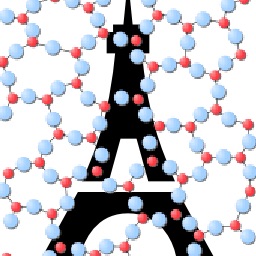Topological Control on the Structural Relaxation of Atomic Networks under Stress
Upon loading, atomic networks can feature delayed irreversible relaxation. However, the effect of composition and structure on relaxation remains poorly understood. Herein, relying on accelerated molecular dynamics simulations and topological constraint theory, we investigate the relationship between atomic topology and stress-induced structural relaxation, by taking the example of creep deformations in calcium silicate hydrates (C─S─H), the binding phase of concrete. Under constant shear stress, C─S─H is found to feature delayed logarithmic shear deformations. We demonstrate that the propensity for relaxation is minimum for isostatic atomic networks, which are characterized by the simultaneous absence of floppy internal modes of relaxation and eigenstress. This suggests that topological nanoengineering could lead to the discovery of nonaging materials.
